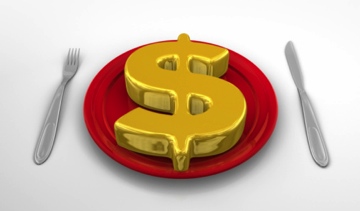
Recently, Philadelphia-based Marquis & Co. announced it would implement a $15 an hour minimum wage across all nine units in July, as reported by Nation’s Restaurant News. Marquis said the average minimum wage at HipCityVeg’s Philadelphia locations is currently between $11 and $12 an hour. The biggest question is, how is the company paying for the roughly 20% increase in wages? Menu price increases.
After more than a year into the COVID-19 pandemic, prices for both labor and food are expected to rise. Labor shortages, federal and state minimum wage increases, delivery fees, supply chain issues and of course, Covid-19, are all expected to create uncertainty. Based on our analysis, food-away-from-home prices will likely rise 3-4%, while food-at-retail inflation will hover around 2-3% in 2021.
Restaurant Delivery Helped in 2020, But Costs Were High
While restaurants are beginning to reopen, 2020 consumer spending was driven by significant decreases in spending on eating out in restaurants. A common fallacy is increases in spending for carry-out over the past year made up for this deficit of eating out, but that was not the case.
Since January 2020, the USDA reported that the cost of food eaten at home rose by 3.8%, which was double the year-over-year increase from 2019 to 2020. Inflation was a minimal factor in the increased cost of groceries, according to the USDA.
Restaurant Dining is Highly Price Elastic
Unlike retail, however, there is a threshold of price consumers are willing to pay before the demand begins to decline for restaurant meals. In economics terms, this means restaurant dining is highly elastic compared to grocery shopping.
As a rule of thumb, a one-percent drop in the price of a good produces a one-percent increase in demand for the product, meaning the price elasticity of demand is one.
According to the USDA, the price elasticity of restaurant meals is approximately 2.3 – far higher than the average of 0.5 to 1.5 for elastic goods. This means that, in theory, any price increase at a restaurant is going to lead to a sharper decline in demand (or “elastic” response to price changes).
What Food Companies Can Do
The economics of pricing aside, the restaurant industry will face a number of hurdles when it comes to rising costs. Prior to the recession in 2008, we saw fuel prices hover around $5 per gallon and meats, oils and poultry prices skyrocket. We advised then a number of responses and implications – some of which are relevant in today’s environment:
- Provide tips to customers on how products and categories can be used (front-of-house and back-of-house) to maximize revenues, but still maintain cost targets.
- Consider labor-saving benefits of products – or at the very least, easy-to-use products in a fast-paced, under-skilled environment.
- Help operators reduce waste not in only your categories, but others, to help build trust and intimacy.
- Offer menu suggestions that combine products with less costly ingredients that enable operators to meet target food costs.
- Emphasize consumer and industry insights to highlight the demand and health of foodservice.
- Adapt quickly to new media and online methods of ordering to better communicate with your customers.
- Improve the yield, or serving per unit, for example, to offset price and to move more toward value.
The Uncertainties Loom in 2021
Higher increases in food and labor costs are nothing new to veterans of the foodservice industry. A gentle reminder to consider how past obstacles have been overcome will place managers in a better spot to act instead of to react.
Like the content? Sign up to receive our communications.

Recent Comments